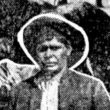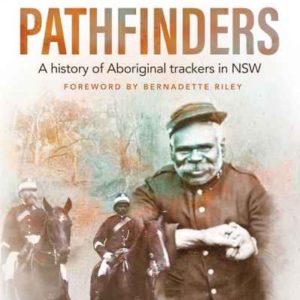Loading map...

Trackers were employed at Porters Retreat (approximately 70km south-south-east of Bathurst) from at least 1903 to 1916 and probably later[ref]SARANSW Police Salary Registers.[/ref]. The settlement was originally known as Glencoe and changed its name in about 1908 to Porters Retreat.
As can be seen in the accompanying plan, by 1914 the tracker was living in a hut adjacent to the police constable’s residence.[ref]Justice and Police Museum file 42137[/ref] A single roomed dwelling made from slab timber and iron, the hut, which also included a stone fireplace, measure 9ft by 13ft. The forage room for horses was bigger. Not far away was the stable and the tracker was probably in charge of looking after the horses. In fact, the first tracker employed at Porters Retreat, Jack Cave, was a renowned horse breaker who began his career at Mogil Mogil (near Walgett) in 1900 and later worked at Bathurst in the 1920s.
Jack Cave was a Wiradjuri man, but other trackers at Porters Retreat came from distant groups. The first tracker, Harry Doolan, came from Pilliga and was later identified as a “Kamilaroi” man[ref]Norman Tindale Pilliga genealogy journal and notes, 1938, South Australian Museum.[/ref]. He worked at Porters Retreat from December 1903 to January 1904. Edward O’Rourke came from Victoria and enlisted to fight in WWI after tracking at Porters Retreat from November 1913 to the end of 1916, and then Orange in 1917.[ref]Aboriginal Heritage Study for the Cabonne and Blayney Council Local Government Areas, 2016, unpublished report prepared by Dr Michael Bennett for NTSCORP.[/ref]
Little is known about the fourth tracker, A. Bishop, who worked from October 1909 to November 1913. Tragedy struck when his wife Mary Yates was killed in a fire in August 1911.[ref]Bathurst Times 10 August 1911: 4.[/ref] Bishop took up the job as the Coonamble tracker in January 1914 after leaving Porters Retreat.

 This website explores the history of Aboriginal trackers in NSW from 1862 when the current NSW Police Force was established through to 1973 when the last tracker, Norman Walford, retired. You can read about the lives of individual trackers and some of the incredible tracking feats they...
This website explores the history of Aboriginal trackers in NSW from 1862 when the current NSW Police Force was established through to 1973 when the last tracker, Norman Walford, retired. You can read about the lives of individual trackers and some of the incredible tracking feats they...

There were over 200 NSW police stations that employed Aboriginal trackers between 1862 and 1973. Many were concentrated in the central-west and north-west of the state, the agricultural and pastoral heartland of NSW. This is because one of the main jobs of trackers was to pursue sheep, cattle and horse thieves. Trackers sometimes lived in small huts out the back...
Learn More ►
Pathfinders book Pathfinders, A history of Aboriginal trackers in NSW, written by Dr Michael Bennett and published by NewSouth, is now available from all good bookstores. Click on the link below to order your copy. https://www.abbeys.com.au/book/pathfinders-a-history-of-aboriginal-trackers-in-nsw.do Early History Since the beginning of the colony, government agencies, explorers, surveyors and members of the general public called upon the tracking...
Learn More ►